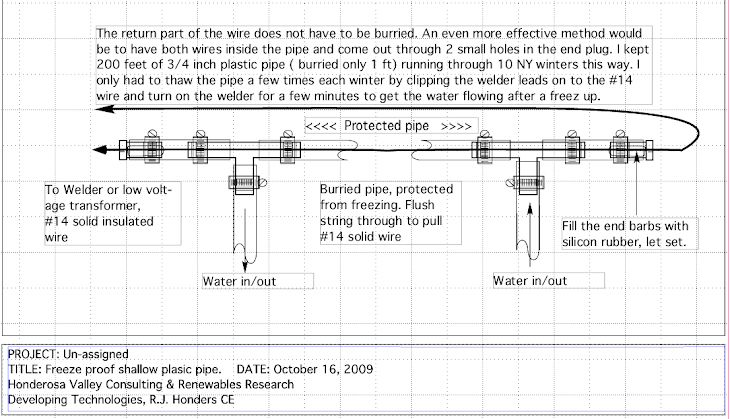Three years ago I started designing this system on the waterfall by our house that I had been eying for energy for 35 years. I partnered with the owner of the waterfall which is just off the edge of our land. We shared expenses, I did all the engineering, the partner contributed access rights, labor and graphic design, I have a dump truck, back-hoe, bulldozer and a big, well equipped shop. We share the power output of the project.
Since so much of the cost of the project was in the penstock, powerhouse and (wiring) infrastructure, I decided to try a Pump As Turbine (PAT) before spending a lot of money on a commercial turbine/generator. As it turned out my initial calculations for a 4 nozzle Pelton showed that it could deliver 14KW. I figured out that a 3X4X9 end-suction centrifugal pump with a 30HP 3 phase motor and capacitor bank could deliver close to that but for 10% of the cost of a new Pelton. I also have 12 feet of suction head below my powerhouse floor that I would be giving up if I used a Pelton.
Centrifugal end suction pumps are readily available (on Ebay) and reasonably priced. I got mine for $500 with the motor, and paid another $300 for freight from somewhere in the middle of the country. I had read somewhere that PAT's were difficult to control, but I decided to try a butterfly valve control anyway. It works well with a simple servo that looks at the line voltage and runs a 12V high torque servo motor on the valve. (in fact an automotive electric window operator mechanism) This setup gives rudimentary and somewhat slow voltage regulation.
For fast response to load changes I developed PIC16F818 based Distributed Load Controller(s) that are on all the water heaters (and space heaters in the winter). These controllers simply look at the line Voltage and Frequency, and if V/F drops by a presettable amount (3%) the controller reduces the power to the load (water heater) thus raising the voltage and allows the butterfly valve time to open up some to supply the needed power. Conversely, if a load ( like a refrigerator) shuts off the voltage will tend to rise and the Distributed Load Controller(s) will boost the power to the ( water/space ) heaters thereby lowering the voltage. I have found that at nominal line voltage we run at 60 HZ +/- 1Hz with the load ranging from 5KW to 10KW. I am currently working on computerizing my instrumentation so that I can log and plot the various parameters. Then I'll have a much better idea of overall system performance and stability.
I have also had an interesting time designing an intake structure to accommodate flow rates that vary 1000:1 with 500lb boulders, rocks, gravel, sand, leaves, logs, sticks, and worst of all frizzel ice in winter. I hope to have time soon to add some details to my blog.










No comments:
Post a Comment